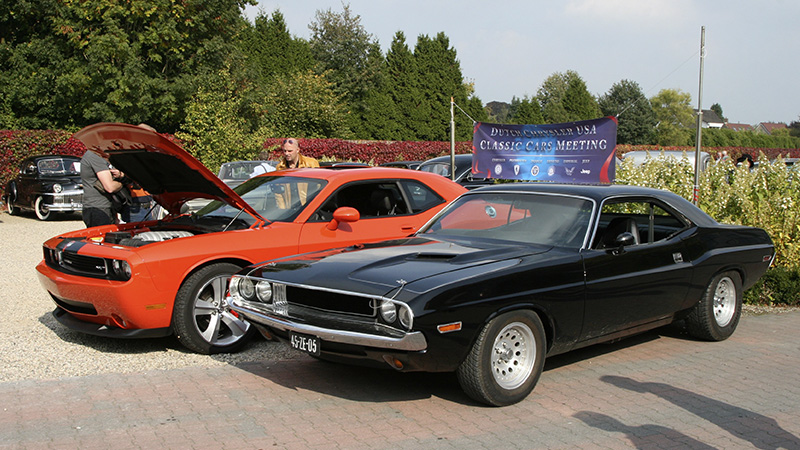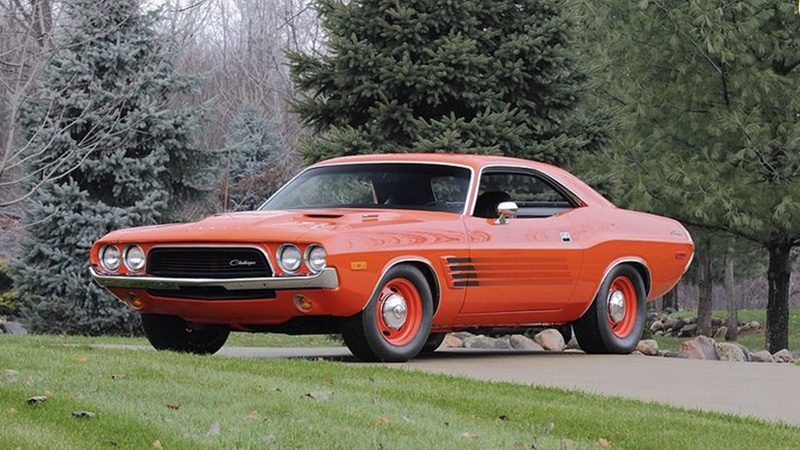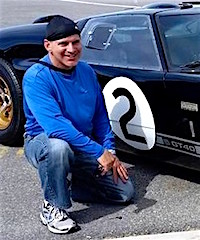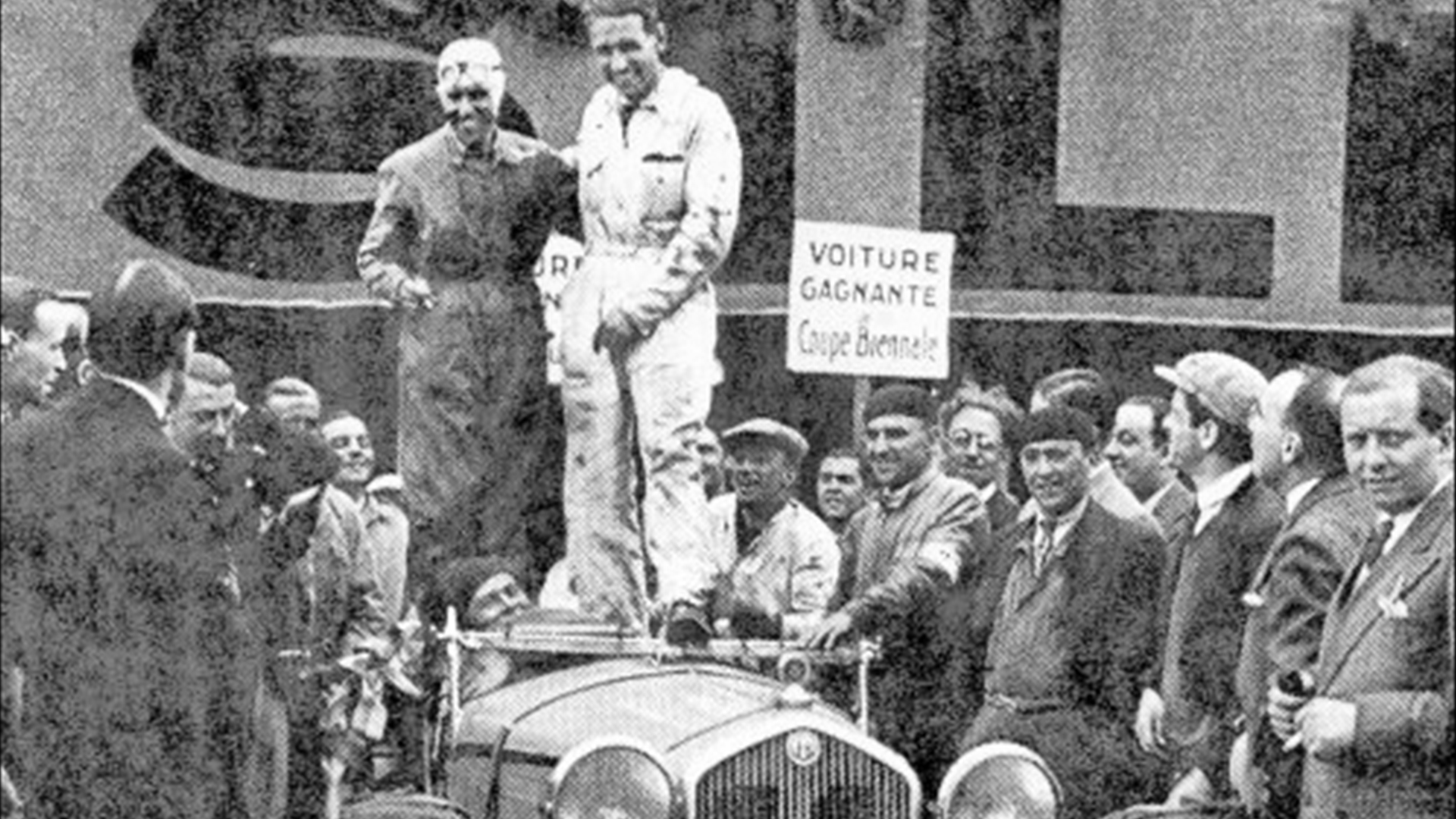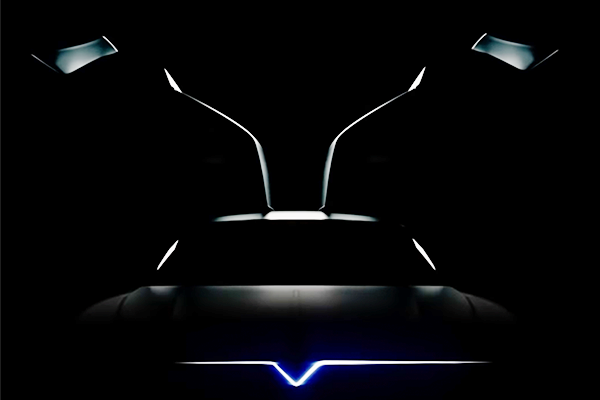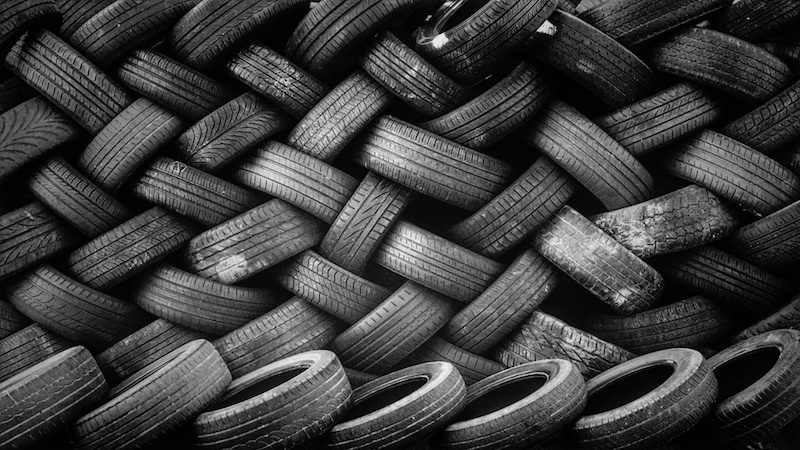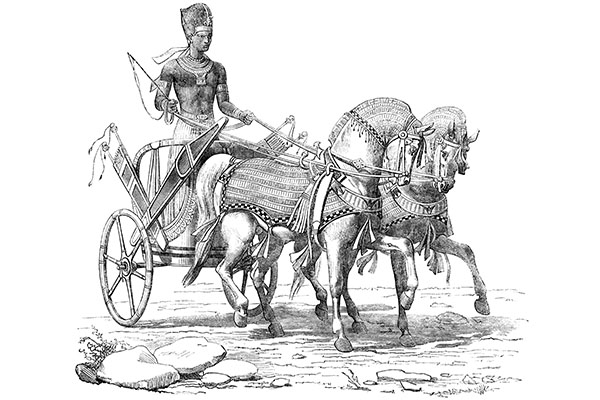From timeless icons to everyday essentials, Crucial Cars examines the vehicles we can’t live without. For this installment, we put the spotlight on Dodge’s long-time rival to the Camaro and Mustang, the Challenger.
Although Plymouth had slapped a huge fastback rear window onto its pedestrian Valiant and called it a Barracuda back in ’64, Ford is credited with starting the sporty four-passenger coupe/convertible segment a few weeks later with its much more unique Mustang, hence the “pony car” nickname for this then-new segment.
By 1970, the pony car segment was in full force. The Chevy Camaro and Pontiac Firebird came onto the scene for 1967, as did a redesigned Barracuda that broke away from its humble Valiant roots. AMC debuted its Javelin for 1968. And then Dodge finally joined the party for 1970 with its Challenger.
Big Bruiser
With its bigger size compared to its rivals (it was about four inches longer and five inches wider than a Mustang), the Challenger, available in coupe and convertible body styles, was a boulevard bruiser. Curiously, its redesigned-for-’70 Barracuda platform mate was about five inches shorter in length, making it more of a true pony car in terms of size. Still, there was no denying the appeal of the Challenger no matter how you wanted to classify it.
Mild to Wild
As with its competitors, the Dodge Challenger could be equipped with anything from a lackluster six cylinder engine to any of a number of pavement rippling V8s. Trim levels included the base Challenger, luxury-themed Challenger SE, high-performance R/T and road race track-focused T/A.
Engine choices ran the spectrum from a 225-cubic-inch slant six with just 145-horsepower and on through 318-, 340-, 383-, 426-, and 440-cubic-inch V8s. Of them all, the most highly respected were the high-winding 340 4-barrel and “Six-Pack” (three two-barrel carbs), stout 440 4-barrel and Six-Pack and brutal 426 Hemi, (which boasted two four-barrel carbs). Their seriously underrated outputs stood at 275 hp, 290 hp, 375 hp, 390 hp, and 425 hp, respectively.
Performance figures of the day had the Challenger T/A (which came with the 340 Six-Pack) sprinting to 60 mph in around 7.0 seconds and running the quarter mile in around 15.0, with the 440 Six Pack about a second quicker in each contest. A Hemi Challenger was king of the strip with the 0-to-60 dash done in about 5.8 seconds and the quarter mile done in the high 13s.
The following year, 1971, saw the T/A version and its 340 Six-Pack engine dropped from the lineup, but the 440 Six-Pack and the 426 Hemi were still available. This would be the last year for those big brutes. A split grille insert and separated rear taillights (versus the single unbroken strip of ’70) marked the minor styling update for that year’s Challenger.
As most muscle cars fans know, 1972 signaled the downfall of this performance era, and the Challenger was a victim as well. In addition to the convertible body style going away, so too did the big engine options, leaving just the slant six, 318 V8 and 340 V8. Furthermore, a drop in compression ratios as well as a change from SAE Gross to Net (engine running a full exhaust and accessories) ratings dropped output numbers.
Trim levels were also reduced that year to just two: the base Challenger and the sportier Rallye. As such, the hot ticket for ’72 was a Challenger Rallye with the 340 V8 and a four-speed stick. The 0-to-60 and quarter mile times for that version were still respectable at around 7.5- and 15.5-seconds, respectively. Styling changes included a much larger grille that continued below the bumper and a change to four semi-rectangular taillights.
For 1973 and 1974 (which would be this generation’s last year) the Challenger continued pretty much unchanged with the exception of a 360 cubic-inch V8 replacing the 340 for 1974 and the car receiving larger bumper guards to meet federal standards.
In Name Only
For 1978, the Challenger returned. No, actually just the name returned as that classic moniker was affixed to a Dodge-badged version of a Mitsubishi built sport coupe powered by – perish the thought – a four cylinder engine. Actually, one could choose between a 2.0-liter, 77 hp mill or a 2.6-liter 105 hp four banger. Electronic features and a plush velour interior highlighted this rival to the Toyota Celica and Datsun (Nissan) 200SX. For 1980, the big four became the standard engine while 1981 brought a more upright roofline. 1983 was the last year for this misnamed but pleasant enough small sport coupe.
The Real Challenger Returns
More than three decades after the original Challenger left the factory, its true successor returned. Specifically, 2008 saw the return of the Dodge Challenger, complete with a tribute to the 1970’s styling as well as a rip-roaring V8 engine. Though it may look very similar to a ’70-’74 Challenger, the new-age one is considerably larger. At around 4,150 pounds it tips the scales about 500 pounds heavier, and both wheelbase and overall length are around six inches greater. The positives are that the new Challenger has a lot more safety and luxury features, as well as considerably greater rear seat passenger room.
Indeed, only the ultra-high-performance “SRT8” version was available for 2008, complete with a 425-horsepower, 6.1-liter Hemi V8 engine matched to a five-speed automatic. Performance was stunning, as the Challenger SRT8 could leap to 60 in just 5.1 seconds and dismiss the quarter mile in 13.2 seconds, handily beating the legendary 426 Hemi Challenger of 1970. And unlike the old car, this one boasted fairly athletic handling around corners and could stop from 60 mph in just 115 feet.
The following year, a six-speed manual became available for the SRT8 and a base, V6-powered SE debuted, along with the return of the R/T, this time as a mid-level performance version packing a 5.7-liter, 370 hp Hemi V8.
For 2011, a new V6 engine sporting 305 hp debuted, meaning no apologies need be made for driving a “base” Challenger. Also, the SRT8 became the SRT8 392, the numbers signifying in cubic inches a larger V8 with 470 eager horses that can catapult this beast to 60 mph in just 4.5 seconds. Upgrades in suspension, steering and brakes across the lineup make this a very good year to consider if you’re in the market for a Challenger.
Essentially Unchallenged
Apart from minor equipment shuffling and some new trim levels, the Challenger continued through 2014 mostly unchanged. But 2015 brought some really big news. New styling paid tribute to, what else, the 1971 Challenger with its split grille (on all but the Hellcat version) and separated taillights. A new interior was a leap forward in terms of style and materials quality, while an eight-speed automatic joins the six-speed manual for transmission choices.
And now, forget 500, or even 600 horsepower. With the 2015 Challenger SRT Hellcat, an incredible 707 horsepower could be had under the scooped hood of a Challenger. Performance of this road burner was simply mind bending, with the dash to 60 mph a traction-dictated 4.1 second effort (with drag radials a 3-second time would likely be cake) and the quarter mile unreeled in just 11.9 seconds, making this one of the quickest street legal cars ever offered for sale to the general public.
Join the Club
If you’re a Challenger owner or even just an enthusiast, there are a few web sites you can check out for specs, classifieds and car show information. There are the Challenger Club of America, Dodge Challenger Forumz, and West Coast Challengers, to name a few.

